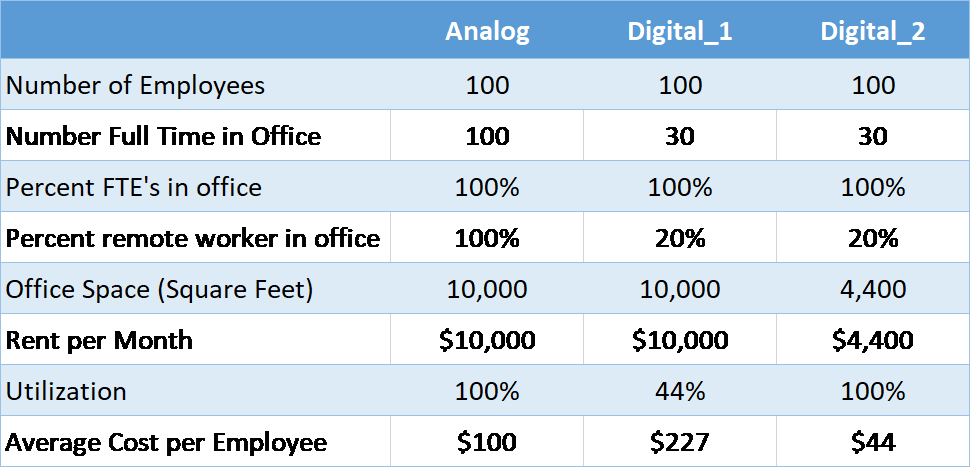Much has been written about the digital workforce and the trend toward mobility and flexible work hours. Much has also been written about the difficulties traditional managers face embracing these trends and their reluctance, or inability, to modify their management styles and to trust remote workers to fulfill their responsibilities.
The thing is, resisting these trends is doomed to fail. The emerging workforce is far more inclined to work according to their preferences rather than those of old-school companies and their legacy managers. So, employers who fail to embrace these changes will surely run out of workers and hand an advantage to their forward-thinking competitors.
Information technology underlies the trend away from the need for a worker to attend a central office to perform his or her responsibilities. These days, documents that used to be printed, and then printed again and again after rounds of amendments, are never printed at all. Documents can be prepared at any time and from anywhere and then delivered electronically for collaboration and approvals. The physical location of the individuals involved in the life of a document, from inception to multi-person approvals, has become irrelevant.
In establishing digital filing cabinets accessible 24/7 from a web browser, the tether to the corporate office is eliminated. Eliminating the tether facilitates greater worker flexibility and productivity, because the unproductive time that used to be spent on a daily commute is eliminated.
The implications that result from workers fulfilling their responsibilities from remote, decentralized locations go far beyond print volumes. The need for office equipment and even the need for office space is decided by the expected utilization of the equipment and space a business commits to. If the owner miscalculates and doesn't utilize the assets it committed to, then the average cost of the asset will be greater than planned.
 Suppose a business committed to 10,000 square feet of office space for one hundred "analog" employees but, subsequently, 70% of those employees went "digital" and spent 80% of their time working from remote locations. In that case, the business finds it now only requires 4,400 square feet. If it costs $10,000 per month to rent 10,000 square feet, the average monthly cost per employee is $100. However, in the digital scenario, the average cost of the office space per employee is $227 because the space is now only utilized 44% of the plan.
Suppose a business committed to 10,000 square feet of office space for one hundred "analog" employees but, subsequently, 70% of those employees went "digital" and spent 80% of their time working from remote locations. In that case, the business finds it now only requires 4,400 square feet. If it costs $10,000 per month to rent 10,000 square feet, the average monthly cost per employee is $100. However, in the digital scenario, the average cost of the office space per employee is $227 because the space is now only utilized 44% of the plan.
Businesses that recognize and embrace the trend toward remote workers will develop a significant competitive advantage over those that do not.
Less space means not only is the need for printing equipment and supplies reduced but so is the requirement for desks and all the other items typically needed to operate the office. Furthermore, the throughput capacity needed for the remaining devices is lower and, usually, devices with a lower throughput capacity are less expensive to acquire in the first place.
These developments are combining to create a perfect storm for traditional resellers as companies spend less on capital outlays and less on the supplies needed to operate their business.
Conclusions:
- All these inter-connected developments will have a strong bearing on how independent resellers fare over the coming years. In recognizing the reduced demand for printed output, resellers must adjust their value propositions to ensure their offer is sized appropriately for their customers' requirements. Unfortunately, this means they will be selling less.
- The rapid trend toward remote working will accelerate the reduction in demand for office products and equipment because assets already in place at the remote worker's place of work (i.e., home office, Starbucks, etc.) are utilized without the business owner having to pay for them. This scenario accelerates the resellers’ loss in sales.
- Compounding these two developments will be the requirement for fulfilling the remote worker's remaining demand for equipment and supplies that continue to be reimbursable by the employer. When a remote worker needs a printer, paper, ink, toner, or whatever else the employer may pay for, two behavioral characteristics typically come into play:
- Leave it to the last minute.
- Limited perceived responsibility for obtaining the lowest cost.
For resellers that continue to operate on legacy technology platforms and who fail to recognize these trends, there will be little chance to compete effectively with those who do. Behavioral characteristics which result in last-minute decisions play into the hands of Amazon which leverages technology to deliver quickly while also providing the lowest cost.
To thrive, resellers must offer a technology-based value proposition to provide customers with products at a competitive price that is properly sized to the customers' capacity requirements. The products must be delivered quickly to multiple locations under a technology umbrella that gives the buyer enough control over spending decisions that increasingly take place in remote locations outside his or her direct control.
